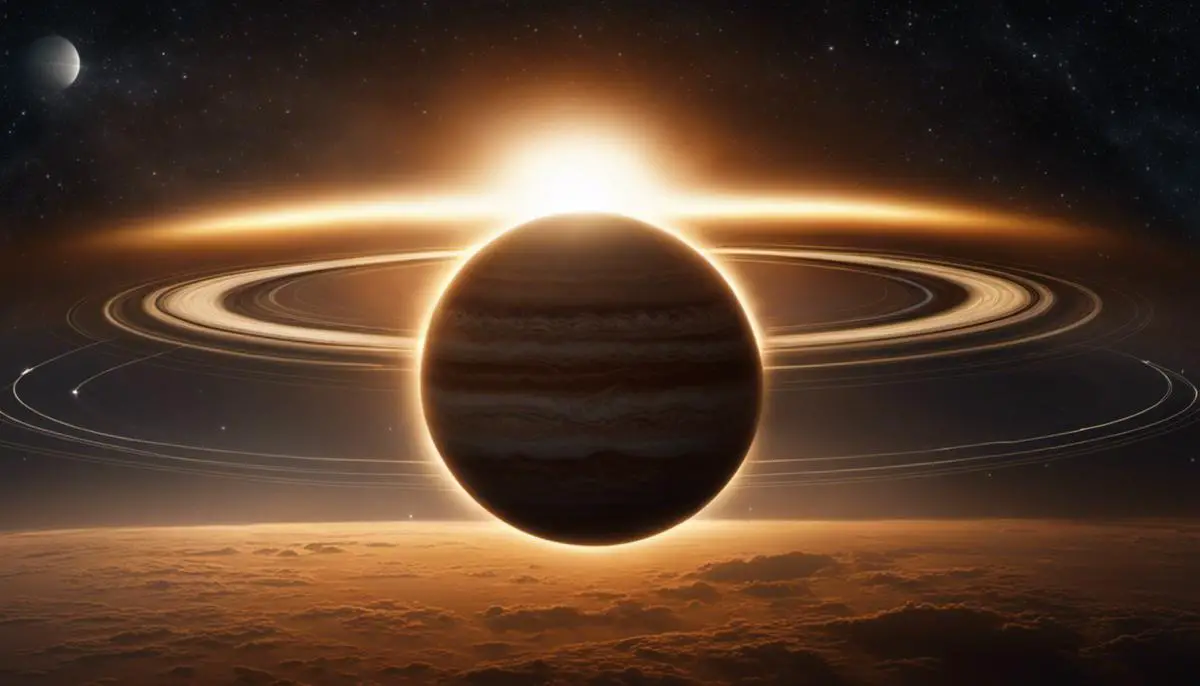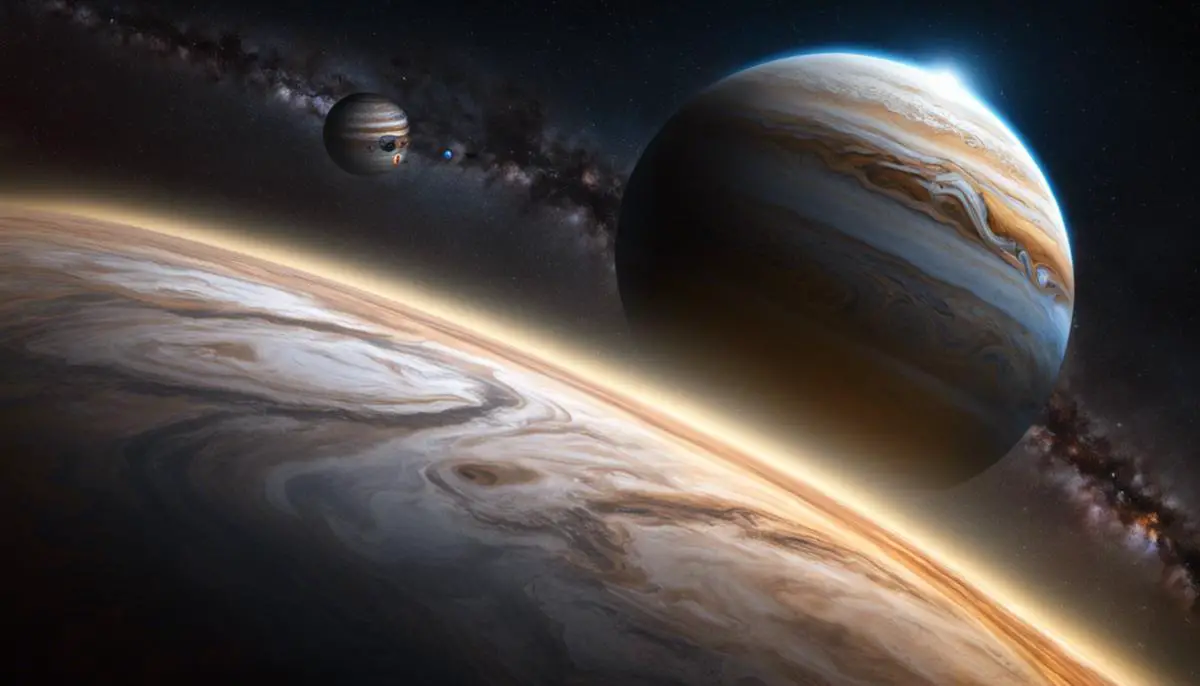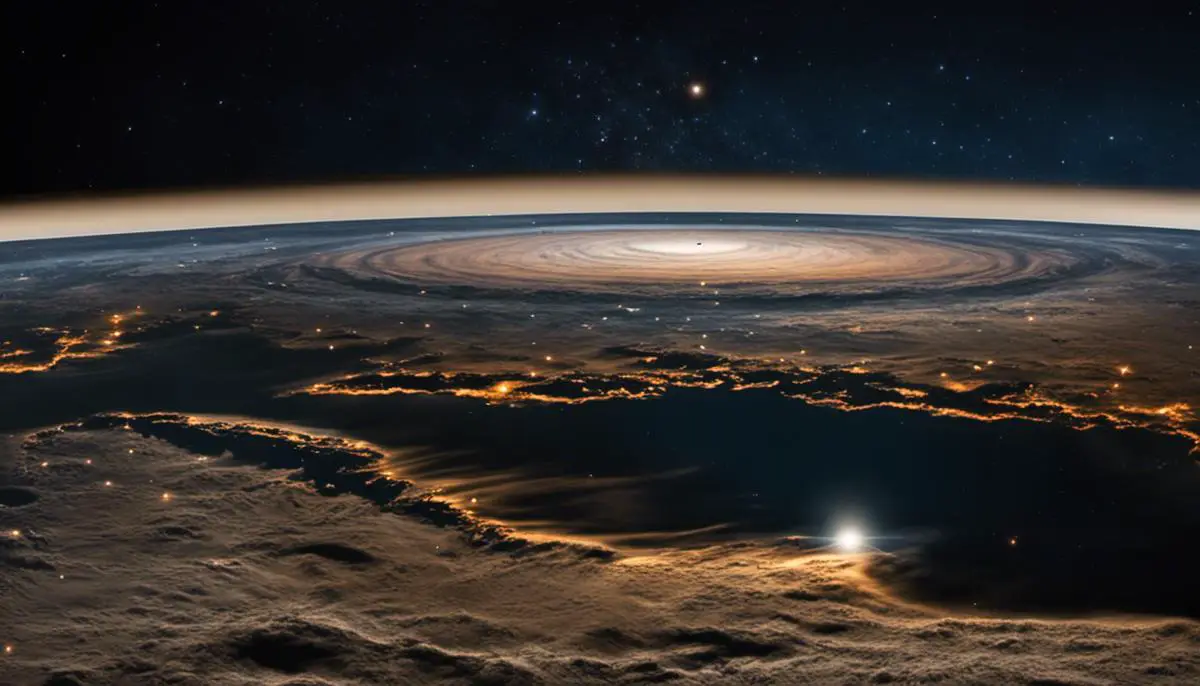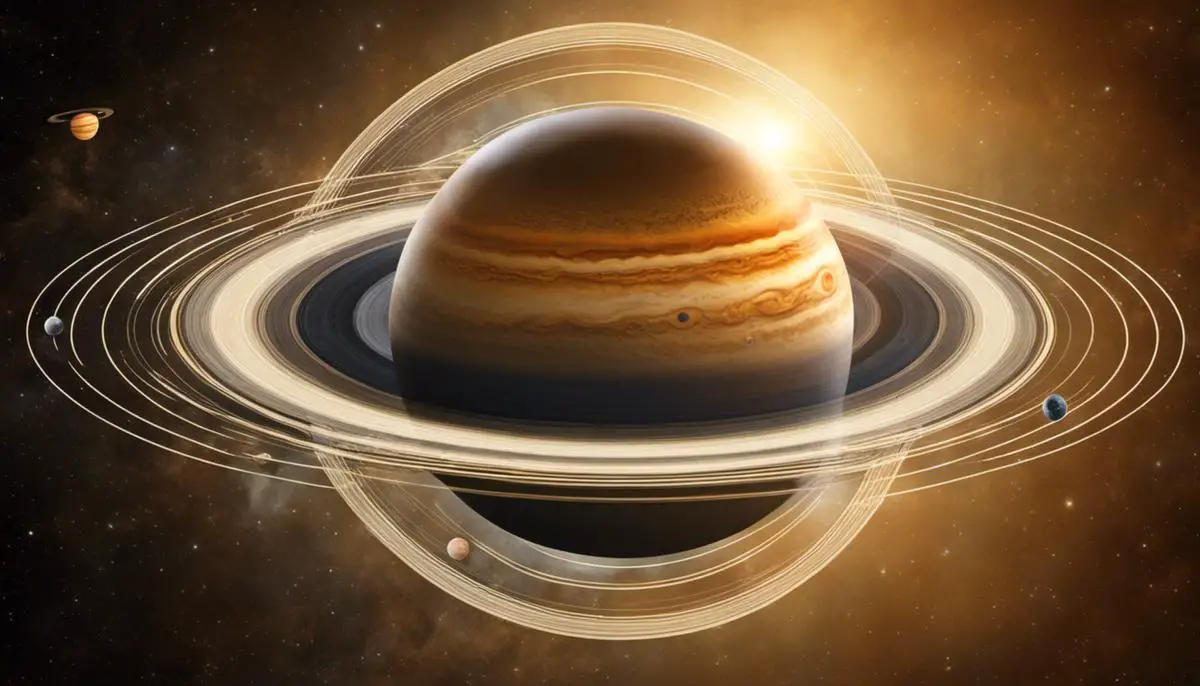Our universe is an astounding place filled with celestial marvels and one such marvel that has been a subject of great intrigue and exploration is Jupiter, the largest planet in our solar system. Humans, ever curious beings, have always tried to understand this gas giant’s relationship to our blue planet, Earth. This essay delves into fascinating aspects such as Jupiter’s elliptical orbit, its proximity to Earth at different times during its orbital period, and the notion of opposition when Jupiter is at its closest to Earth. Furthermore, the tangible effects of Jupiter coming closer to us are investigated, encompassing aspects from improved astronomical viewing to potential tides’ impact. The discussion then extends to cover the historical and future of these close approaches, offering readers not just an insight into architecture of our solar universe, but also a glimse into our future understanding of it.
Jupiter’s Orbit and Proximity to Earth
Jupiter’s Orbit Around the Sun
Jupiter, the largest planet in our solar system, orbits the sun in an elliptical, or slightly oval-shaped orbit. This orbit is not a perfect circle, which means the planet’s distance from the sun varies. At its closest point, known as perihelion, Jupiter is about 460 million miles away from the sun. At its furthest point, known as aphelion, Jupiter can be around 508 million miles away.
Positioning of Earth and Jupiter
The distance of Jupiter from Earth, however, is dependent not only on Jupiter’s orbit, but also on the positioning of Earth. As Earth travels along its orbit around the sun faster than Jupiter, there will be times when the two planets are on the same side of the sun and very close to each other, and times when they are on opposite sides of the sun, with the entire solar system between them.
Jupiter’s Orbital Period
Jupiter takes approximately 11.86 Earth years to complete one orbit around the sun. Contrastingly, earth orbits the sun once every 365.25 days or about one Earth year. This difference in orbital periods further affects the distance between Earth and Jupiter, bringing the planets closer or farther apart at different times.
The Concept of Opposition
The concept of ‘opposition’ is a crucial one when discussing the proximity of Jupiter to Earth. Opposition literally means ‘opposite’ in Latin. In astronomy, it indicates a time when a planet is opposite the sun in the sky from the perspective of Earth. For Jupiter, this happens roughly every 13 months. During this time, Jupiter rises as the sun sets and sets as the sun rises, meaning it’s visible in the night sky for most of the night.
At this point of opposition, Jupiter is also the closest it comes to Earth during its orbit, usually around 365 million miles apart. The exact distance can fluctuate due to variations in both Earth’s and Jupiter’s elliptical orbits. The next opposition of Jupiter will take place on April 15, 2023.
Understanding the positions of Earth and Jupiter in their respective orbits along with the astronomical event known as opposition is key to determining when Jupiter is closest to Earth. This knowledge is especially valuable for anyone looking to observe the staggering beauty of this enormous planet in greater detail.

Effects of Jupiter’s Close Approach
Astronomical Implications of Jupiter’s Proximity to Earth
Jupiter, the colossus of our solar system, makes its elliptical path around the sun at a mean distance of 484 million miles. When Earth and Jupiter find themselves in alignment with the sun, an event termed as “opposition”, Jupiter makes its closest approach to Earth. Resulting from this alignment is a significantly brighter Jupiter, dominating the night sky like a celestial beacon. This offers an extraordinary chance for astronomers and sky-gazers alike to examine the planet meticulously, even through the lens of a small telescope. Among the highlights visible during this period are Jupiter’s four colossal moons, known as the Galilean moons, and the finely detailed patterns in the planet’s immense cloud system.
Gravitational Influence of Jupiter’s Close Approach
Despite its massive size, Jupiter’s gravitational influence on Earth when it comes closest is minimal. Earth’s distance from Jupiter varies between about 365 million miles at opposition to approximately 601 million miles when the two planets are on opposite sides of the sun. However, the gravitational force exerted by the Jupiter is significantly smaller than that of the moon due to its large distance from Earth. Thus, although Jupiter does have a gravitational effect on Earth, this effect is not substantial enough to cause appreciable changes.
Impact on Earth’s Tides
Speculation might lead one to believe that Jupiter, being so large, has a considerable impact on Earth’s tides, particularly when the planet comes closest in its orbit. However, Jupiter’s effect on Earth’s tides is relatively negligible compared to the impact of the moon or the sun. Even when Earth and Jupiter are at their closest, the tidal effect of Jupiter on Earth is over 1000 times weaker than that of the moon.
Close Approach: A Gateway for Spacecrafts
Jupiter’s close approach to Earth has practical to use for space exploration. Spacecrafts launched to Jupiter often use the alignment of Earth and Jupiter’s orbits during the opposition to save energy and time. One such example is NASA’s Juno mission. Launched in 2011, the spacecraft capitalized on the close approach phenomenon to travel to Jupiter, arriving in 2016 after a five-year journey.
An Overview of Jupiter’s Closest Approach to Earth
The planet of Jupiter has a cyclical journey, reaching its closest distance to Earth approximately every 13 months. This specific occurrence, known as a close approach, doesn’t happen on a set date and varies each year. This is due to Earth seemingly passing Jupiter in their respective paths around the sun. The latest close approach we experienced was on August 19, 2021, with the one prior taking place on July 14, 2020. We can anticipate the next close approach sometime in the later portion of 2022.

Historical and Future Close Approaches
The Historical Track Record of Jupiter’s Close Approaches to Earth
The fluctuating distance between Earth and Jupiter stems from the orbital paths within our solar system. About every 13 months, Earth and Jupiter reach an astronomical event called “opposition”, aligning on the same side of the Sun. This marks the shortest distance between the two celestial bodies.
In the past, we’ve had some significant close approaches. On March 8, 2011, Jupiter was a mere 368 million miles away from Earth. Similarly, on September 21, 2010, it reached a close distance of 368.5 million miles. With each close approach, the brilliance of Jupiter’s shine is noticeably more prominent in our night sky.
Notable Events and Discoveries
Historical close approaches between Earth and Jupiter have served to fuel our understanding of Jupiter and its many moons. For example, in 1609, during a close approach, Galileo Galilei was able to view Jupiter through a telescope and discover four of Jupiter’s largest moons – now known as the Galilean moons.
Even today, scientists and astronomers continue to use these close approaches to launch spacecraft for exploration. Examples include the Juno mission by NASA, launched in 2011, which took advantage of the close orbit to send a spacecraft to orbit and study Jupiter.
Future Close Approaches and Viewing Opportunities
There are already calculated dates for future close approaches of Jupiter to Earth. Astronomers predict that the next close approach will occur on April 15, 2022, when Jupiter will be 380 million miles away from Earth. Another exciting occurrence will be on August 20, 2023, predicted to be an even closer approach at approximately 367 million miles.
During these close approaches, Jupiter will appear extremely bright in the sky – even brighter than most stars. It will be visible to the naked eye and appear as a clear, non-twinkling point of light.
Moreover, with a decent-sized telescope, observers should be able to see many fascinating details. For example, Jupiter’s four largest moons will be visible as small bright points of light either side of the planet. For the best viewing experience, it’s advisable to look for Jupiter when it’s at or near the zenith (the highest point it reaches in the sky).
However, it’s essential to remember that the actual visibility of Jupiter can be influenced by other factors, including local weather conditions and light pollution. In general, the best viewing conditions are typically in less urbanized areas on a clear moonless night.

Learning about Jupiter and its celestial dance with Earth truly opens up the universe of knowledge. As we explored the intricate patterns of its orbit and the influences of its close proximity, the understanding have painted a richer picture of the interconnectedness of the celestial bodies. Moreover, a look back at the history of Jupiter’s close approaches with the potential future rendezvous underscores the significance of Jupiter, not just as a distant planet but a close celestial neighbor with which our lives are far more intertwined than we perceive. As we continue to explore our universe, let this knowledge not only inform us of the celestial events in our sky, but also remind us of the incredible dynamism, complexity, and beauty of the universe we are a part of.
![]()
